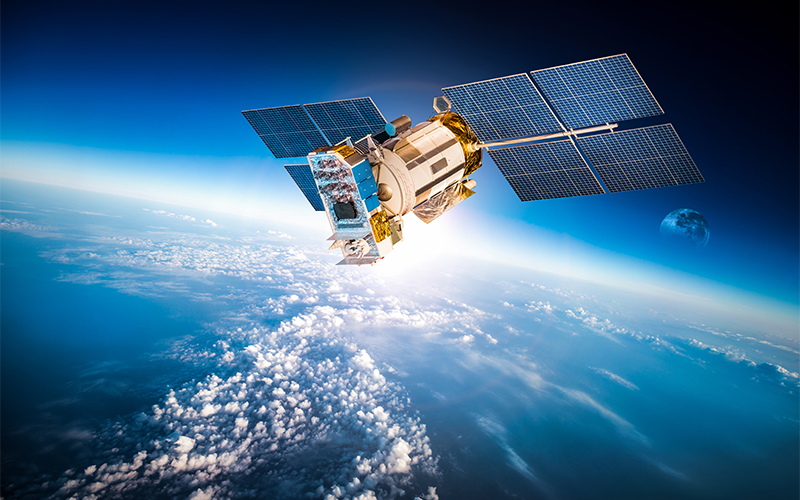Geospatial Data Services
How can GIS address concerns in agriculture?
As the world population continues to grow, with the UN estimating it to be 8.5 billion by 2030, food production struggles to keep up with the rising demand. Land degradation, soil erosion, and unpredictable weather patterns are negatively affecting agricultural yields worldwide. Modernising agrarian practices is the only way to avoid the looming global food security crisis, and geospatial agriculture solutions are paving the way for precision farming. Geographic information systems (GIS) data, including spatial modelling and predictive analysis, provide accurate land analyses and projections of likely outcomes. This data helps farmers make informed and prudent decisions and to get maximum yield out of their land in the long term while minimally affecting the environment.
The way we collect spatial data is constantly evolving, and GIS provides information-dense, interactive, three-dimensional models of the world around us. Backed by artificial intelligence (AI), machine learning (ML), and advanced analytics, we can efficiently and quickly analyse large amounts of data on soil, weather patterns, crop life cycles, pests, geology, yield, resource management, and several other factors to augment location-specific intelligence and empower farmers. Modern innovations in collecting and analysing geospatial data can overcome challenges faced by the agricultural sector and help increase crop production to match the ceaselessly growing demand. Let’s take a closer look at a few of the practical applications of GIS in agriculture.
Predicting crop yield
We can now predict crop yields with remarkable accuracy using ML algorithms and satellite data. The algorithm learns from historical productivity datasets and archived images to identify yield patterns and project future crop productivity. This information helps governments and farming communities plan budgets, forecast profits, and ensure food security.
Monitoring crop health
It isn’t possible to manually monitor crop health across vast swathes of farmland and prevent major losses. Satellites and aircraft equipped with remote sensing equipment now rapidly collect geospatial data to help identify insect infestations, plant diseases, or irrigational issues in order to take remedial action. Relevant GIS data includes air temperature, plant temperature, humidity, and more, while modern geospatial agriculture solutions analyse this data to assess the health of crops in real time.
Monitoring and controlling pest infestations
Pest and insect infestations have always been leading challenges in the agricultural sector and have caused immense crop losses throughout history. AI-equipped algorithms can be trained to identify early signs of an infestation by studying historical satellite images of infested land and identifying patterns and trends. Once trained, the algorithm can analyse photographs and geospatial data to identify patterns indicating the beginnings of an infestation.
Managing natural phenomena
Farming has always been at the mercy of mother nature; unexpected droughts, floods, and soil erosion wreak havoc with crop production. One of the key advantages of incorporating GIS in agriculture is the ability to predict these occurrences with modern geospatial data collection and analytics technologies. Historical flood data, satellite images, and field surveys can be used to create flood inventory maps to identify areas susceptible to flooding, as well as areas that might witness a drought in the future. Similarly, we can use the universal soil loss equation (USLE) to analyse historical GIS data and field observations to create highly detailed maps to determine the level of soil deterioration and erosion.
Assessing irrigation systems
Monitoring water intake of each crop seems like an impossible task, but modern geospatial agriculture solutions make this possible. AI-equipped algorithms can spot deficiencies in the water supply and identify visual water shortage patterns by studying high-resolution aerial images of the land in question. This data can create water distribution maps to assess the efficiency of an irrigation system and identify its shortcomings.
For organisations on the digital transformation journey, agility is key in responding to a rapidly changing technology and business landscape. Now more than ever, it is crucial to deliver and exceed organisational expectations with a robust digital mindset backed by innovation. Enabling businesses to sense, learn, respond, and evolve like living organisms will be imperative for business excellence. A comprehensive yet modular suite of services is doing precisely that. Equipping organisations with intuitive decision-making automatically at scale, actionable insights based on real-time solutions, anytime/anywhere experience, and in-depth data visibility across functions leading to hyper-productivity, Live Enterprise is building connected organisations that are innovating collaboratively for the future.
How can Infosys BPM help?
Infosys BPM is poised to modernise agricultural practices with an expansive suite of geospatial analytics services. Reach out to learn more about using GIS in agriculture to prevent crop failures and boost production.






